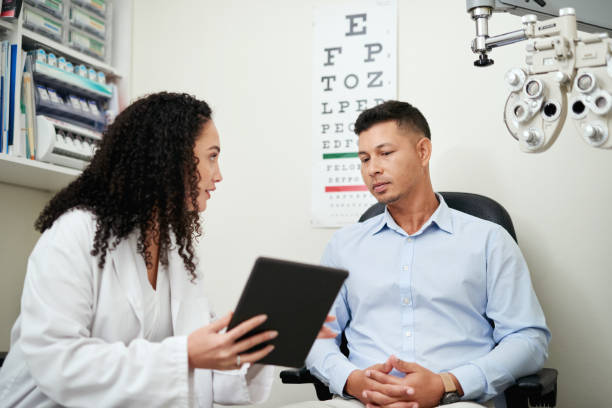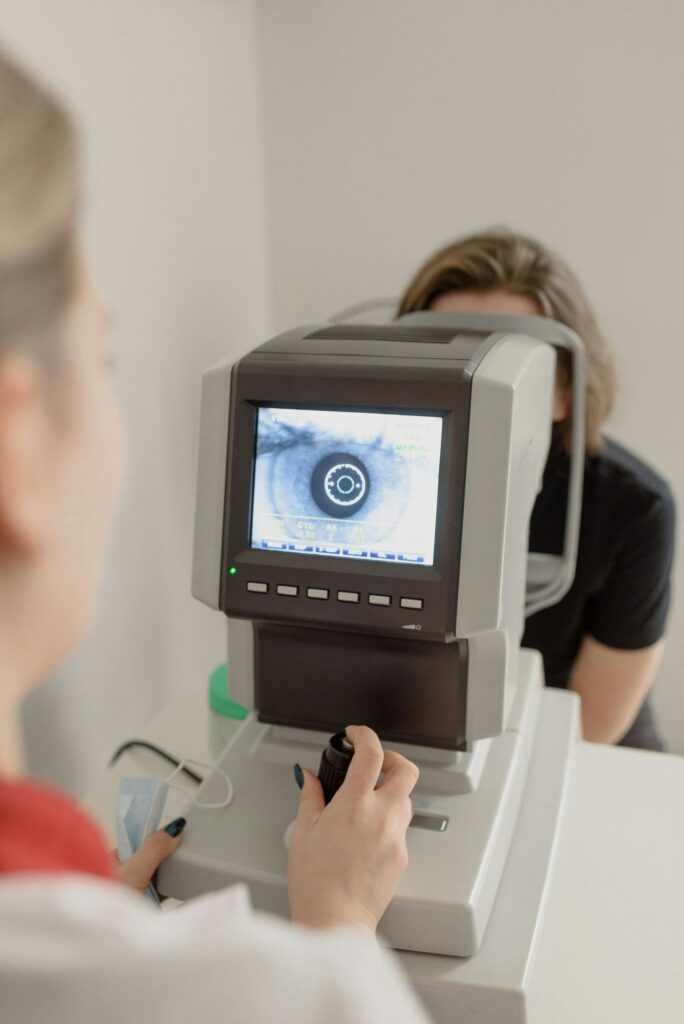Insurance
Learn if Your Health Insurance Covers Eye Exams
Are you wondering whether your health insurance covers eye exams? Taking care of our eyes is critical, but the cost of frequent eye exams can be prohibitive for many. Fortunately, health insurance can help reduce some of the financial strain.
Whether you have private insurance or are covered by a government program like Medicare or Medicaid, it’s critical to understand which eye care procedures are covered.
Understanding the Importance of Regular Eye Exams
Regular eye exams are essential for keeping your eyes healthy and avoiding issues. These exams do more than just check your vision; they can assist detect early symptoms of eye diseases and ailments like glaucoma, cataracts, and age-related macular degeneration.
Early detection of eye issues allows for timely treatment and prevention of further visual impairment. Furthermore, eye exams can reveal underlying health conditions such as diabetes and excessive blood pressure, which can cause symptoms in the eyes.

Different Types of Health Insurance Plans and Coverage Options
Private insurance, employer-sponsored plans, and government programs such as Medicare and Medicaid are all options for health insurance coverage. Understanding the various types of plans and coverage options available can allow you to make more informed decisions about your eye care.
- Private insurance plans: These plans are typically offered by insurance companies and can be purchased individually or through an employer. Private insurance plans vary in coverage and cost, so it’s essential to review the details of your specific plan to determine if eye exams are covered.
- Employer-sponsored plans: Many employers offer health insurance as part of their employee benefits package. These plans often include coverage for routine eye exams, but the extent of coverage may vary. Be sure to review your plan’s details or speak with your employer’s benefits coordinator for clarification.
- Government programs: Medicare and Medicaid are government programs that provide health insurance coverage for eligible individuals. Medicare Part B generally covers one comprehensive eye exam every 12 months for beneficiaries at high risk for eye diseases. Medicaid coverage for eye exams varies by state, so it’s important to check with your local Medicaid office for specific details.
What to Consider When Choosing a Health Insurance Plan for Eye Care
When selecting a health insurance plan, it’s crucial to consider your specific eye care needs. Here are a few factors to keep in mind:
- Coverage for routine eye exams: Determine whether the plan covers routine eye exams and how frequently they are covered. Some plans may only cover one exam per year, whilst others may offer more frequent coverage.
- Coverage for eye conditions: If you have an ongoing eye problem, such as glaucoma or diabetic retinopathy, make sure your plan covers the tests, procedures, and medications required to address your condition.
- In-network providers: Determine whether the plan includes a network of eye care providers in your area. Seeing an in-network provider can save you money on out-of-pocket expenses because they have negotiated rates with the insurance company.
- Out-of-pocket costs: Out-of-pocket expenses include the deductible, copayments, and coinsurance associated with the plan. These charges can vary dramatically between plans, impacting your overall eye care expenses.

Does Health Insurance Typically Cover Routine Eye Exams?
Preventive care, including routine eye exams, is generally recognized as important by health insurance programs. However, the coverage for eye exams may differ based on your plan and provider.
Routine eye exams are covered by most private insurance plans, usually with a copayment or coinsurance requirement. The frequency of coverage can vary, with some plans covering one exam per year and others every two years.
Routine eye exams are also covered by government programs like Medicare and Medicaid, however qualifying and coverage details may vary. Medicare Part B offers one thorough eye exam per year for participants who are at high risk of developing eye illness. Medicaid coverage varies by state, but it typically covers eye exams, particularly for children and people with certain risk factors.
It is critical to study your insurance policy or contact your insurance provider directly to determine whether eye care services are covered by your plan. Furthermore, certain insurance plans may only cover eye tests if you have an existing eye condition or a known risk factor, such as diabetes or age-related macular degeneration.
Factors That May Affect Coverage for Eye Exams
While many health insurance policies cover routine eye exams, several variables may impact coverage or necessitate additional documentation:
- Age: Some insurance plans may have age restrictions on routine eye exams. For example, they might only cover exams for children or anyone above a specific age.
- Risk factors: Certain eye problems or risk factors, such as diabetes, a family history of eye illness, or certain vocations, may affect coverage. Insurance companies may require evidence or verification of certain risk factors before providing coverage for eye exams.
- Medical necessity: Eye exams are frequently required by insurance plans to be considered medically essential for coverage. This signifies that the exam is required for identifying or treating a specific eye problem or symptom.
- Referral requirements: Some insurance plans may need a referral from a primary care physician or optometrist before covering an ophthalmologist-performed eye exam.
Understanding these factors can help you anticipate any potential limitations or requirements for coverage and ensure you receive the eye care you need.

How to Navigate the Insurance Claims Process for Eye Exams
Once you’ve received an eye exam, understanding how to navigate the insurance claims process is essential to ensure you receive the maximum coverage available. Here are a few tips to help you through the process:
- Verify coverage: Before arranging an eye exam, contact your insurance provider to confirm coverage and any additional requirements, such as pre-authorization or referrals.
- In-network providers: Whenever possible, seek an eye care provider who is covered by your insurance plan. This reduces out-of-pocket expenditures and streamlines the claims process.
- Submit claims promptly: If you pay for the eye exam in advance, make sure you file your claim with the insurance company as soon as possible. Delaying claim submission may result in delayed reimbursement or claim denial.
- Keep records: Keep copies of all pertinent papers, such as receipts, explanations of benefits (EOBs), and any other communication regarding the eye exam. These documents can be used as proof of payment and to address any potential claim disputes.
- Appeal if necessary: If your insurance company denies coverage for an eye test you believe should be covered, do not be afraid to appeal the decision. Provide any documentation or supporting proof that you believe may help your case.
Navigating the insurance claims process may seem daunting, but by staying organized and proactive, you can ensure a smoother experience and maximize your coverage.
Other Options for Covering the Cost of Eye Exams
If your health insurance does not fully cover eye exams or if you don’t have insurance coverage, there are other options available to help offset the cost:
- Discount programs: Some companies provide discount programs for eye care treatments. These programs may offer reduced costs for eye tests, glasses, and contact lenses.
- Vision insurance: There are separate vision insurance policies available that cover eye care services, such as routine eye exams. These plans often have a network of providers and may include additional advantages such as eyeglasses reductions.
- Flexible Spending Accounts (FSAs) and Health Savings Accounts (HSAs): If you have an FSA or HSA, you can use it to pay for eye exams and other qualifying eye care expenses. These accounts allow you to save pre-tax cash for medical expenses, such as vision care.
- Community resources: Some local clinics, nonprofit groups, and community health centers provide free or low-cost eye tests to people without insurance or with little funds. Look into local resources in your area for viable solutions.
Exploring these alternatives can help you find affordable ways to prioritize your eye health and ensure regular eye exams.

Tips for Maximizing Your Health Insurance Coverage for Eye Care
To make the most of your health insurance coverage for eye care, consider the following tips:
- Review your insurance policy. Take the time to learn about your insurance policy’s features, such as eye test coverage and any pre-authorization or referral requirements.
- Stay in-network: Whenever possible, choose eye care providers who are covered by your insurance plan. This ensures you get the most coverage while minimizing out-of-pocket expenses.
- Schedule routine eye exams: Follow your eye care provider’s recommendations for routine eye exams. Early detection and treatment of eye diseases can help you avoid more serious problems and potentially save money in the long term.
- Keep an eye out for changes: Every year, insurance plans’ coverage and providers change. Keep aware of any changes to your plan and adjust your eye care accordingly.
- Utilize preventative care: Make use of the preventive care advantages provided by your insurance plan. Routine eye exams are considered preventive care and are frequently provided at no additional cost to you.
By following these tips, you can ensure you’re making the most of your health insurance coverage for eye care and taking proactive steps towards maintaining optimal eye health.
Conclusion
Understanding the coverage given by your health insurance plan for eye exams is critical to your overall eye health and financial well-being. Regular eye exams are essential for preventing, diagnosing, and treating eye diseases, and health insurance can help with the cost.
Whether you have private insurance or are covered by a government program, it is critical to evaluate your policy, understand the coverage specifics, and confirm which eye care services are included.
When selecting a health insurance plan for eye care, you can make informed decisions by taking into account criteria such as routine eye exams, eye problems, in-network doctors, and out-of-pocket expenditures.
Remember to manage the insurance claims process properly, look into alternate coverage alternatives if necessary, and use your health insurance benefits for eye treatment.
Taking care of your vision should never be overlooked, and with the correct health insurance coverage, you can prioritize your eye health without breaking the bank.
Trusted Health, Wellness, and Medical advice for your well-being


